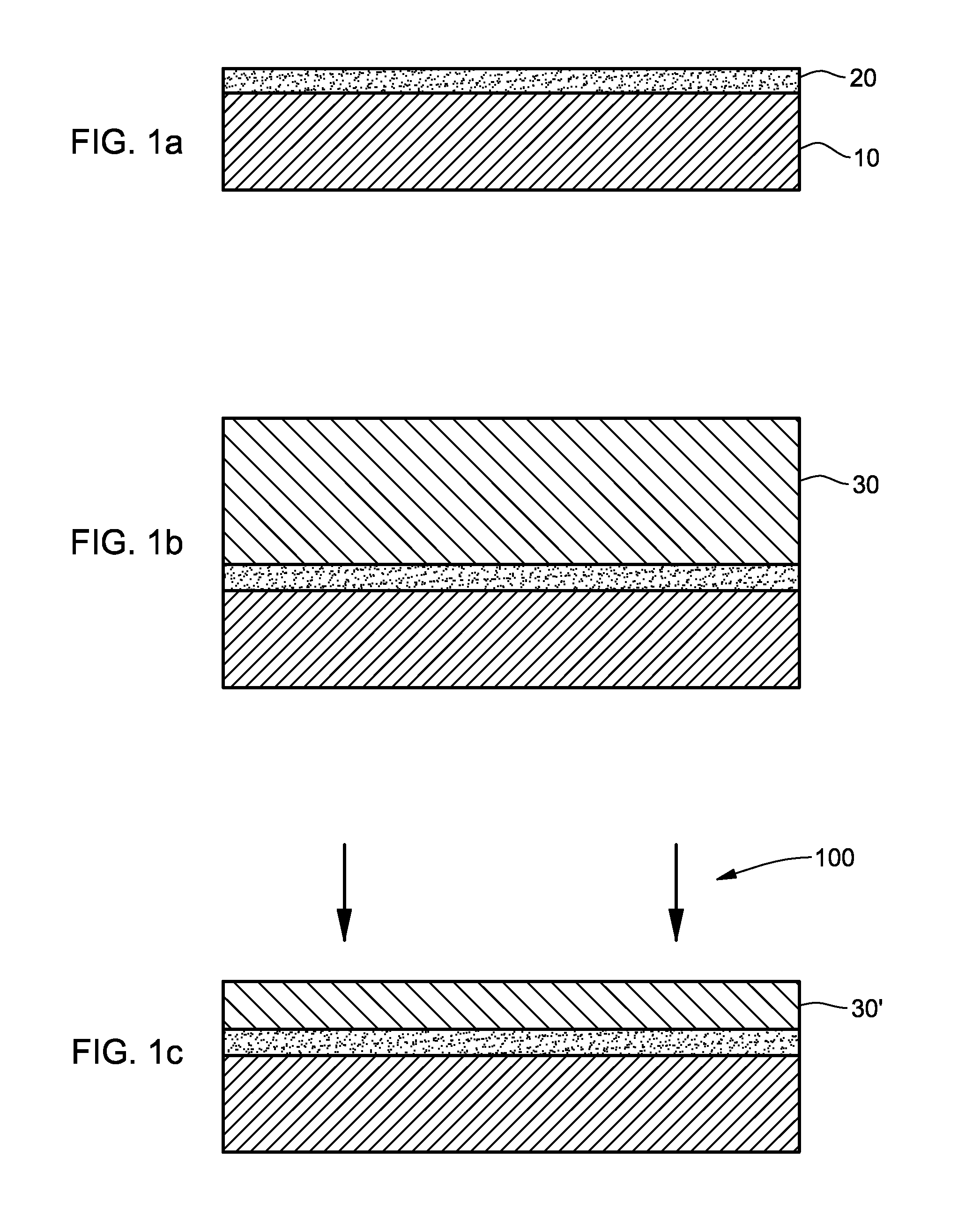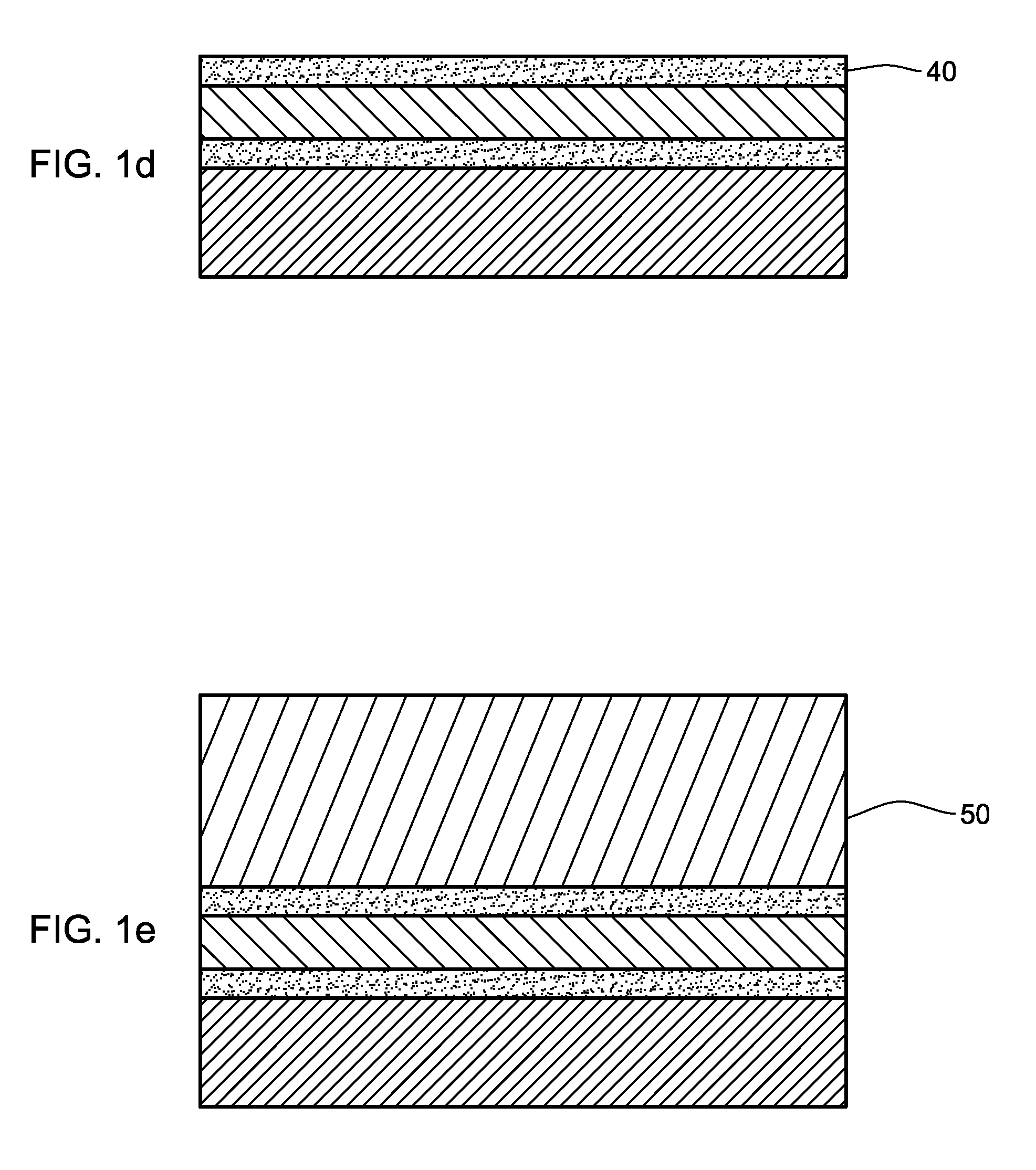X-ray focusing optic having multiple layers with respective crystal orientations
a technology of focusing optics and crystal orientations, applied in the field of xray optics, can solve the problems of only having the option of producing high-intensity x-ray beams, anode x-ray tubes, synchrotrons,
- Summary
- Abstract
- Description
- Claims
- Application Information
AI Technical Summary
Benefits of technology
Problems solved by technology
Method used
Image
Examples
Embodiment Construction
[0015]An x-ray optic structure and exemplary technique for its formation are disclosed with reference to FIGS. 1a-i. (The dimensions in these drawings are exaggerated, and not necessarily in proportion, for illustrative purposes only.) As discussed further below, the optic formed according to the present invention includes multiple layers of, e.g., silicon, each layer having a different, pre-determined crystalline orientation, and bonded together using, e.g., a silicon-on-insulator bonding technique.
[0016]Silicon-on-insulator (SOI) bonding techniques are known in the art, as described in Celler et al, “Frontiers of Silicon-on-Insulator,” Journal of Applied Physics, Volume 93, Number 9, 1 May 2003, the entirety of which is incorporated by reference. In general, SOI techniques involve molecular bonding at the atomic / molecular level using, e.g., Van der Walls forces, and possibly chemically assisted bonding. The term “material-on-insulator” is used broadly herein to connote this family...
PUM
| Property | Measurement | Unit |
|---|---|---|
| thicknesses | aaaaa | aaaaa |
| thickness | aaaaa | aaaaa |
| thickness | aaaaa | aaaaa |
Abstract
Description
Claims
Application Information
 Login to View More
Login to View More - R&D
- Intellectual Property
- Life Sciences
- Materials
- Tech Scout
- Unparalleled Data Quality
- Higher Quality Content
- 60% Fewer Hallucinations
Browse by: Latest US Patents, China's latest patents, Technical Efficacy Thesaurus, Application Domain, Technology Topic, Popular Technical Reports.
© 2025 PatSnap. All rights reserved.Legal|Privacy policy|Modern Slavery Act Transparency Statement|Sitemap|About US| Contact US: help@patsnap.com



